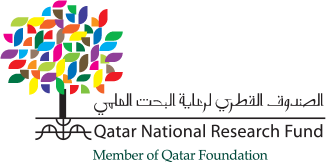Dr. Anton Popelka is a Research Associate at the Center for Advanced Materials of QU since 2013. He obtained his Ph.D. in 2012 from the Polymer Technology program of the Polymer Institute, Slovak Academy of Sciences in Slovakia. His present research mainly focuses on surface modification of different polymeric materials by atmospheric and low-temperature pressure plasma techniques, especially applicable in packaging, membranes, and biomedical applications. To date, Dr. Popelka has authored/coauthored 1 U.S. patent, 3 book chapters, and over 90 peer-reviewed publications with more than 1000 citations. Moreover, Dr. Popelka has also participated in many international conferences and symposiums (about 30). He has also participated and led several projects awarded by the QNRF, QU, and industry; many of these projects have focused on modifying polymeric surfaces with plasma technology.
Research
Introduction
Interests
- Surface treatment using plasma techniques
- Antibacterial modification
- Adhesion improvement
- Water harvesting & treatment
Research Projects

This project was focused on the improvement of adhesive properties of polyethylene (PE) and aluminum (Al). PE belongs among the most widely used polymers in many applications, such in packaging, building, or transport industries. A combination of PE with other materials including metals, such as Al can lead to an improvement of various properties. This combination is often used in a laminate made from PE and Al foil, predominantly used in drinks and food (flexible packaging) industries. The typical example of this is Tetra Pak container accompanying our daily life. PE is responsible for heat-sealing properties whereas Al excels by barrier properties. In the Tetra Pak container preparation the main accent is giving on adhesion between these materials. Hydrophobic character of PE can often lead to the separation of PE-Al layers and the fluid inside Tetra Pak can penetrate to other layers and leak out. On the other hand, Al can contaminant fluid and can make the expiration date shorter. Al contains some oxygen compounds in top layer which can be responsible for the deterioration of wettability too. This deficient can be removed by an appropriate surface modification of PE and Al by which the increase of wettability can be achieved. Plasma discharge represents a good choice for obtaining this demand because plasma represents an effective, dry, eco-friendly process of the surface treatment with high efficiency.

The aim of the proposed project is preparation of slippery polymer surfaces using low-temperature plasma technique in combination with liquid-infused natural based oils and electrospinning technique for biomedical applications. Various polymer materials are frequently applied in biomedical sectors because of their great mechanical properties. However the infections associated with bacteria biofouling of these materials are still discussed problem for their long-term use of these polymeric materials in the biomedical sector. Therefore the development of new and effective technique for the bio-fouling free and anti-microbial modification of polymer surfaces seems to be promising tool for an elimination of the infection diseases. The main objective of this proposal is the development of new modification of different polymeric substrates common used in biomedical applications. These materials will be modified only in the surface area without negative effect on bulk properties. A multistep physicochemical approach is proposed in this research. The first step includes the pre-treatment of different polymer substrates using low-temperature plasma to activate the polymer surface for adhesion properties enhancement. Subsequently the 3-D network of super-hydrophobic fibers will be created on the plasma activated substrate using electrospinning technique. The fibers network surface will be etched by plasma discharge to enhance the super-hydrophobic effect. Final step is consisted of the infusion of different type of natural oils with emphasis on antimicrobial effect. This complex strategy should lead to the effective anti-biofouling and anti-microbial modification of different polymeric materials useful for biomedical applications.
